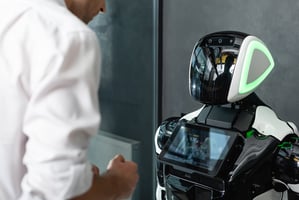Artificial Intelligence (AI) has a wide range of uses that have already begun transforming...
History Behind Fireworks: A Celebration of Chemistry and Engineering
Few things capture the human spirit quite like fireworks. Whether it’s a Fourth of July display, a New Year’s Eve countdown, or a Diwali celebration, fireworks have been lighting up the skies for centuries. But did you know that behind every brilliant burst of color is a story of invention, chemistry and mechanical ingenuity? Let’s look at how fireworks evolved and the engineering principles that still make them so dazzling today.
Fireworks trace their roots back over a thousand years to ancient China. Early on, the Chinese discovered that bamboo stalks tossed into fire would explode with a loud bang—thanks to the air trapped inside. These natural “firecrackers” were used to scare away evil spirits, not entertain and thrill crowds.
By the 9th century, the real breakthrough came – gunpowder. A mixture of sulfur, charcoal, and saltpeter (potassium nitrate), gunpowder was packed into bamboo tubes or rolled paper casings, giving rise to the first true fireworks. These simple rockets were used during festivals, weddings, and Lunar New Year celebrations to chase away bad luck and usher in happiness.
Through trade and military conquest, the knowledge of fireworks spread across Asia into the Middle East and Europe. By the 14th century, Italy and Germany were putting on public displays, and fireworks had become a fixture in royal celebrations—symbolizing power, prestige, and spectacle.
Their appeal continued to grow. In 1777, just a year after the signing of the Declaration of Independence, Americans celebrated their first Fourth of July with fireworks—a tradition that continues to this day. You’ll now find them at everything from global festivals like Bastille Day to championship wins and New Year countdowns around the world.
Why Fireworks and Celebrations Go Hand-in-Hand
- Visual Impact: Bright, colorful, and dynamic, fireworks instantly signal that something special is happening.
- Emotional Connection: They create a shared moment of awe, joy, and community.
- Cultural Tradition: For many, fireworks symbolize luck, renewal, and unity. And let’s face it—they’re just fun to watch.
But there’s more to fireworks than just flash and bang. For engineers, they’re a fascinating blend of chemistry, materials science, and precision design.
Ever wondered why fireworks come in so many colors? It all comes down to chemistry—specifically, the metallic salts used in the firework’s explosive mixture. When these compounds are heated, their atoms release energy in the form of colored light.
|
COLOR |
CHEMICAL COMPOUND |
METAL ELEMENT |
|
Red |
SrCO₃ - Strontium carbonate |
Strontium |
|
Orange |
CaCl₂ - Calcium chloride |
Calcium |
|
Yellow |
NaNO₃ - Sodium nitrate |
Sodium |
|
Green |
BaCl₂ - Barium chloride |
Barium |
|
Blue |
CuCl₂ - Copper chloride |
Copper |
|
Purple |
Strontium + Copper mix |
Strontium + Copper |
|
White / Silver |
Aluminum, Magnesium, Titanium |
High-energy metals |
The temperature and purity of each metal compound affects how vivid and accurate the color appears. Blue is notoriously tricky—copper compounds break down at high temps, turning what should be a brilliant blue into a washed-out green or white.
Engineering the Effects
Beyond color, effects like crackles, spark trails, and timed bursts are created by adding other metals or changing the construction of the shell:
- Iron = Gold sparks
- Titanium = Bright white flashes
- Zinc or lead compounds = Smoke effects
- Time-delay fuses = Choreographed bursts and patterns
From a mechanical perspective, everything must be precisely designed and timed—from the shell’s construction and aerodynamic shape to the sequencing of the lift charge and burst effect.
At its core, fireworks are a miniature example of combustion engineering, pressure dynamics, and chemical control. It’s a great reminder that even our most artistic technologies have solid mechanical roots. For those of us who enjoy working with precision components and engineered systems, there’s a real appreciation for the complexity packed into every colorful explosion.
So, the next time you’re watching a fireworks show, take a moment to think about the centuries of innovation—and the mechanical and chemical craftsmanship—that made it possible.
Want to explore more intersections of science, tradition, and engineering? Subscribe to our blog for fresh insights delivered straight to your inbox.



